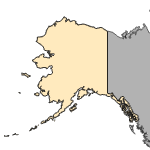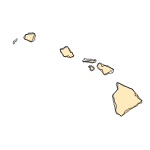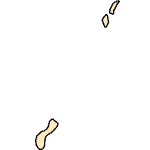Perrunichthys perruno
(leopard catfish)
Fishes
Exotic |
|
Common name: leopard catfish
Synonyms and Other Names: Perruno.
Taxonomy: available through
www.itis.gov
Identification: This genus contains a single species. Keys were provided by Schultz (1944) and Taphorn and Lilyestrom (1984). As well as giving diagnostic characteristics in his original description, Schultz (1944) provided a representative illustration of the species. Distinguishing characteristics and color photographs of live fish were given by Burgess (1989). Adults are large and colorful, with a color pattern similar to that of another large pimelodid catfish, Leiarius marmoratus.
Size: To over 62 cm SL.
Native Range: Tropical America. Restricted to Maracaibo Basin of Venezuela and Colombia, South America (Schultz 1944).



|

Alaska |

Hawaii |

Puerto Rico &
Virgin Islands |

Guam Saipan |
Hydrologic Unit Codes (HUCs) Explained
Interactive maps: Point Distribution Maps
Nonindigenous Occurrences:
Table 1. States with nonindigenous occurrences, the earliest and latest observations in each state, and the tally and names of HUCs with observations†. Names and dates are hyperlinked to their relevant specimen records. The list of references for all nonindigenous occurrences of Perrunichthys perruno are found here.
Table last updated 12/14/2025
† Populations may not be currently present.
Means of Introduction: Probable aquarium release (Howells 2001).
Status: Failed in Texas.
Impact of Introduction: The impacts of this species are currently unknown, as no studies have been done to determine how it has affected ecosystems in the invaded range. The absence of data does not equate to lack of effects. It does, however, mean that research is required to evaluate effects before conclusions can be made.
References: (click for full references)
Burgess, W. E. 1989. An atlas of freshwater and marine catfishes: a preliminary survey of the Siluriformes. Tropical Fish Hobbyist Publications, Inc., Neptune City, NJ.
Ferraris, C. J., Jr. 1991. Catfish in the aquarium. Tetra Press, Morris Plains, NJ.
Howells, R.G. - Heart of the Hills Reserach Station, TX Parks and Wildl. Dept., Ingram, TX. Response to NBS-G non-indigenous questionaire. 1992.
Howells, R.G. 2001. Introduced non-native fishes and shellfishes in Texas waters: an updated list and discussion. Texas Parks and Wildlife Management Data Series, vol 188.
Lundberg, J.G. - Department of Ichthyology, Academy of Natural Sciences, Philadelphia, PA.
Schultz, L. P. 1944. The catfishes of Venezuela, with descriptions of thirty-eight new forms. Proceedings of the U.S. National Museum 94(3172):173-338.
Taphorn, D. C., and C. G. Lilyestrom. 1984. Claves para los peces de agua dulce de Venezuela: 1. Las familias de Venezuela. 2. Los generos y las especies de la Cuenca del Lago de Maracaibo. Revista UNELLEZ de Ciencia y Tecnología (Guanare, Venezuela) 2(2):5-30.
Other Resources:
FishBase Summary
Author:
Nico, L.
Revision Date: 6/7/2012
Peer Review Date: 6/7/2012
Citation Information:
Nico, L., 2025, Perrunichthys perruno Schultz, 1944: U.S. Geological Survey, Nonindigenous Aquatic Species Database, Gainesville, FL, https://nas.er.usgs.gov/queries/FactSheet.aspx?SpeciesID=837, Revision Date: 6/7/2012, Peer Review Date: 6/7/2012, Access Date: 12/15/2025
This information is preliminary or provisional and is subject to revision. It is being provided to meet the need for timely best science. The information has not received final approval by the U.S. Geological Survey (USGS) and is provided on the condition that neither the USGS nor the U.S. Government shall be held liable for any damages resulting from the authorized or unauthorized use of the information.